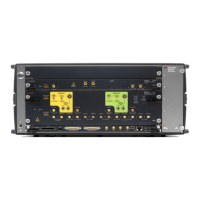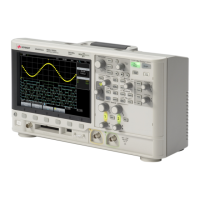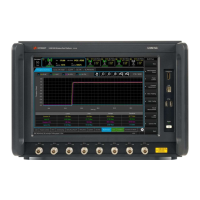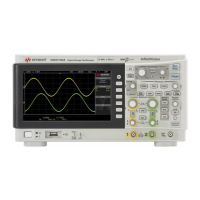510 Keysight M8000 Series of BER Test Solutions User Guide
8 Working with Measurements
Types of Jitter
The standards for jitter tolerance tests prescribe combinations of certain
jitter types. This section gives an overview of these types.
Random Jitter
Random jitter (RJ) is always present. Resistors, transistors, and other
components generate noise that impacts transmitters and receivers.
This kind of jitter has a Gaussian distribution over time.
Bounded Uncorrelated Jitter
Similar to random jitter, bounded uncorrelated jitter (BUJ) has also a
Gaussian distribution, but this distribution is cut (bounded) at both sides.
This kind of jitter can be caused, for example, by crosstalk on a parallel bus
or by intersymbol interference of random or long pseudo random binary bit
sequences.
To simulate bounded uncorrelated jitter for jitter tolerance tests, it can be
generated from a filtered (frequency-limited) PRBS.
Periodic Jitter
Periodic jitter (PJ) is generally picked up from other periodic sources.
• Rectangular Jitter: Rectangular jitter may be caused, for example, by a
switching power supply. The jitter amplitude is usually specified in UI.
One UI (Unit Interval) is always the reciprocal of the present data rate.
• Sinusoidal Jitter: This kind of jitter can be picked up from any adjacent
signal or clock. The jitter histogram has a U-shape.
• Triangular Jitter: Triangular jitter is always generated by a spread
spectrum clock but can also be caused by other periodic sources.
Triangular jitter has a uniform jitter distribution.
Intersymbol Interference
Intersymbol interference (ISI) is caused by bandwidth limitations of cables
and backplanes. It cuts off higher frequencies and hence changes the
shape of the eye opening.
Intersymbol interference can be simulated by inserting a defined
transmission path between the Generator and the DUT.

